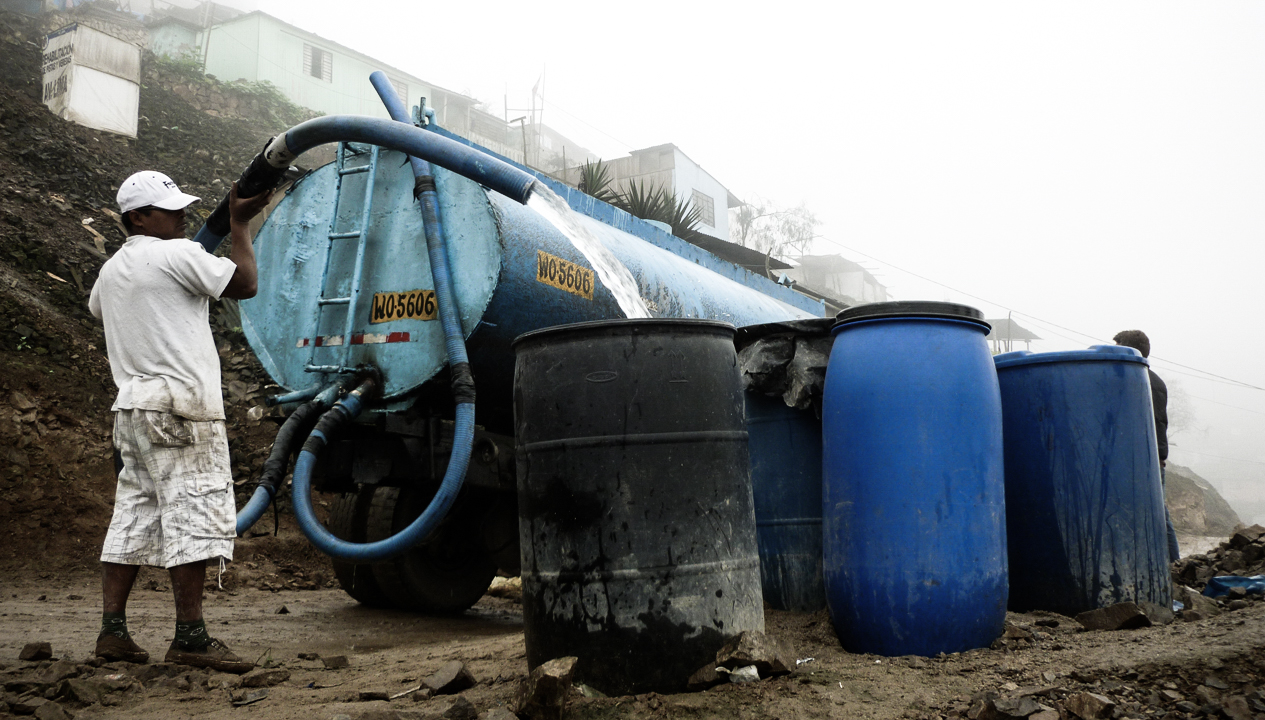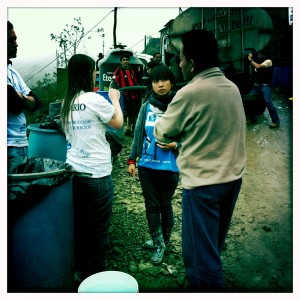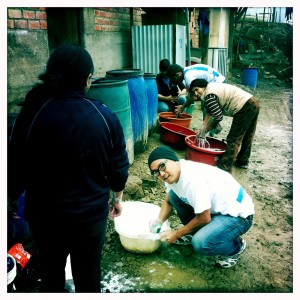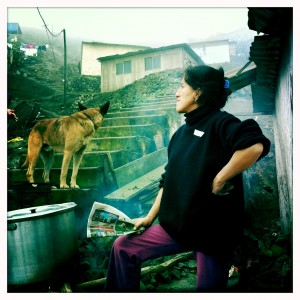Designmatters Vice President, Mariana Amatullo reflects on her time spent in Cerro Verde, a community on the outskirts of Lima, Peru where Art Center students have been conducting field research in collaboration with the Innovation Center of Un Techo Para Mi Pais, as part of the Safe Agua Peru project.
I am just back from Lima and time in the field with the extraordinary team of students and faculty who are leading the Safe Agua Peru project.
Safe Agua Peru marks our second collaboration with the Innovation Center of Un Techo Para Mi Pais and builds upon the lessons we have learned working together in Chile in 2009. At the helm of this transdisicplinary studio are once again Dan Gottlieb and Penny Herscovitch (Environmental Design) and Liliana Becerra (Product Design). Julka Almquist from our Humanities and Design Sciences Department rounds up the faculty team.
With the support of an NCIIA Sustainable Vision Grant, the team is charged to delve deep into the systemic issues around water poverty that affect this community of about 85 families who are served by Un Techo Para Mi Pais Peru in Cerro Verde, Pamplona Alto, in the district of San Juan de Miraflores. We are anticipating that the rigorous and participatory research framework of the studio, coupled with privileged access to the community thanks to Techo will yield outcomes that can make a lasting impact.

Askan Straume (Un Techo Para Mi Pais) and Dan Gottlieb (Environmental Design, Faculty) help residents make chicken soup
The complexity we are confronting is humbling. As we started to learn from our meetings last week with the Mayor of Lima, and conversations with other government officials and leading experts at the field office of the Pan American Health Organization, the scale of the problem surrounding water distribution and sanitation services in Lima is daunting with clearly no comprehensive short-term solutions in sight. While the problem is also part and parcel of a universally recognized global water crisis with scary stats, it somehow takes a new urgency and specificity for us when we meet Luz and Karina, the community leaders of Cerro Verde and their families. For them, as for the communities of thousands who reside perched high in the misty hills of the “cinturón urbano of Lima” (the urban beltway of the city) a lack of effective policy and reliable infrastructure translates into aggravated economic hardship and public health hazards. On average, this community pays seven times more than someone in the downtown area for water that has to be boiled before consumption and is delivered by a network of highly unreliable small scale providers who drive their water trucks up the windy roads of Cerro Verde.
There are many mental snapshots that stay with me from my abbreviated time in the field–students helping prepare the delicious sopa de gallina, the chicken soup that was cooked on an open fire on our first day, children playing with bubble wands and crayons, my struggling to keep a mischievous band of little boys to take turns with my photo camera at snapping pictures, our teams sharing in on getting routine domestic and water chores done, quiet conversations happening here and there. All amount to a string of experiences from just one morning that generates vivid emotions upon recall.
And so I am reminded once again about the intangible learning that occurs in these social impact design projects defined by deep immersion–the humanity they elicit from each of us. I keep thinking we are moving the needle so to speak in how we are stretching our educational models here at the college, how we continue to be bold in our resolve, and also a bit fearless about what we want to set out to accomplish as creatives, as educators, as people.
Safe Agua Peru is off to a beautiful start. You can follow the team on the project blog at safeagua.org.



